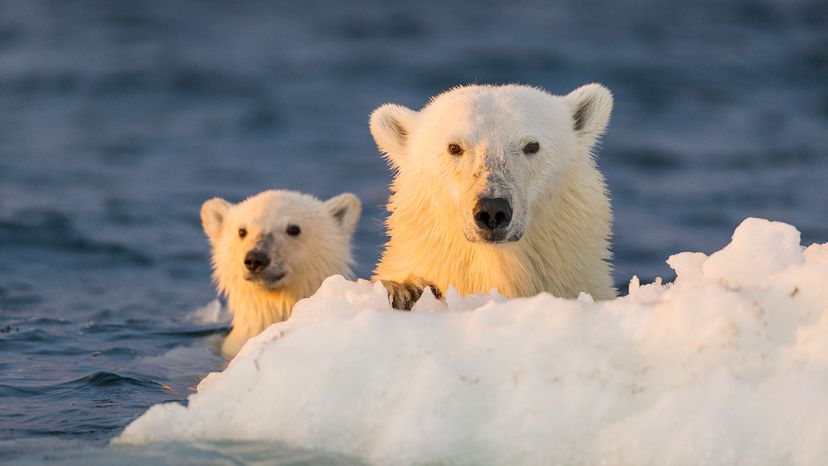Polar Bear Reproduction

As with most animals, polar bears mate in the spring. Scientists aren't sure how sexually mature males find females who are ready to mate. Brown bear females seem to leave a scent trail for males to follow. This could also be the case with polar bears.
Females usually mate successfully for the first time between the ages of 6 and 8. They only have about five litters in their lifespan, which is one of the lowest reproduction rates among mammals. Females only mate every few years, so males must compete fiercely for a female to mate with. When male bears fight over a female, the challenger will lower his head, put his ears back and open his mouth wide, roaring and bearing teeth. Polar bears seldom fight to the death for mating rights; the weaker bear usually submits after an injury.
Advertisement
Female polar bears don't really go into heat the way some other mammals do. They're induced ovulators, which means that it's intercourse itself that causes their ovaries to release an egg. Ovulation doesn't happen immediately, and it may take several tries before a successful mating occurs. Once mated, the couple stays together for about a week before separating. Polar bears aren't monogamous animals – a strong male might impregnate several females in one season [source: Polar Bears International].
Like most aspects of polar-bear life, the pregnancy process is about energy conservation. A pregnant female feeds heavily in the spring to build up her fat reserves and prepare for a maternity rest in the fall. In the maternity den, only the cubs eat, consuming their mother's high-fat breast milk for their first months of life.
In late fall, the female digs a cave in a snowdrift, either on a mountainside very close to sea ice or on the sea ice itself. This den is protected from the wind, and provides a secure place to sleep. In early winter, the female gives birth after an approximate eight-month gestation period [source: Polar Bears International]. However, it only takes four months for the unborn cub to actually develop. During the first four months of pregnancy, the embryo is stagnant in the uterus while the mother gains the weight (about 450 pounds or 200 kilograms) she'll need to ensure its development and proper feeding after birth.
There are typically two cubs per litter, and they're surprisingly small. A cub weighs about a pound (2 kilograms) at birth and measures about a foot (30 centimeters) long. It's also blind, toothless and lacking insulation, with only very short, thin fur. Polar bear cubs have no chance of survival without their mother. The family stays in the maternity den until early spring, and the mother doesn't drink, eat or defecate during that time. All she does is protect and feed her young. Even after they leave the den, cubs stay with their mom until they're about 2 years old, learning to hunt, clean themselves and survive in the harshest of habitats.
Like many mothers in the animal kingdom, a polar bear will kill anyone or anything that comes near her young. Polar bears are predators, pure and simple. So what happens when they get stuck on land, with people around? There might be trouble – but as we'll find out, polar bears seldom go looking for a fight with a human.